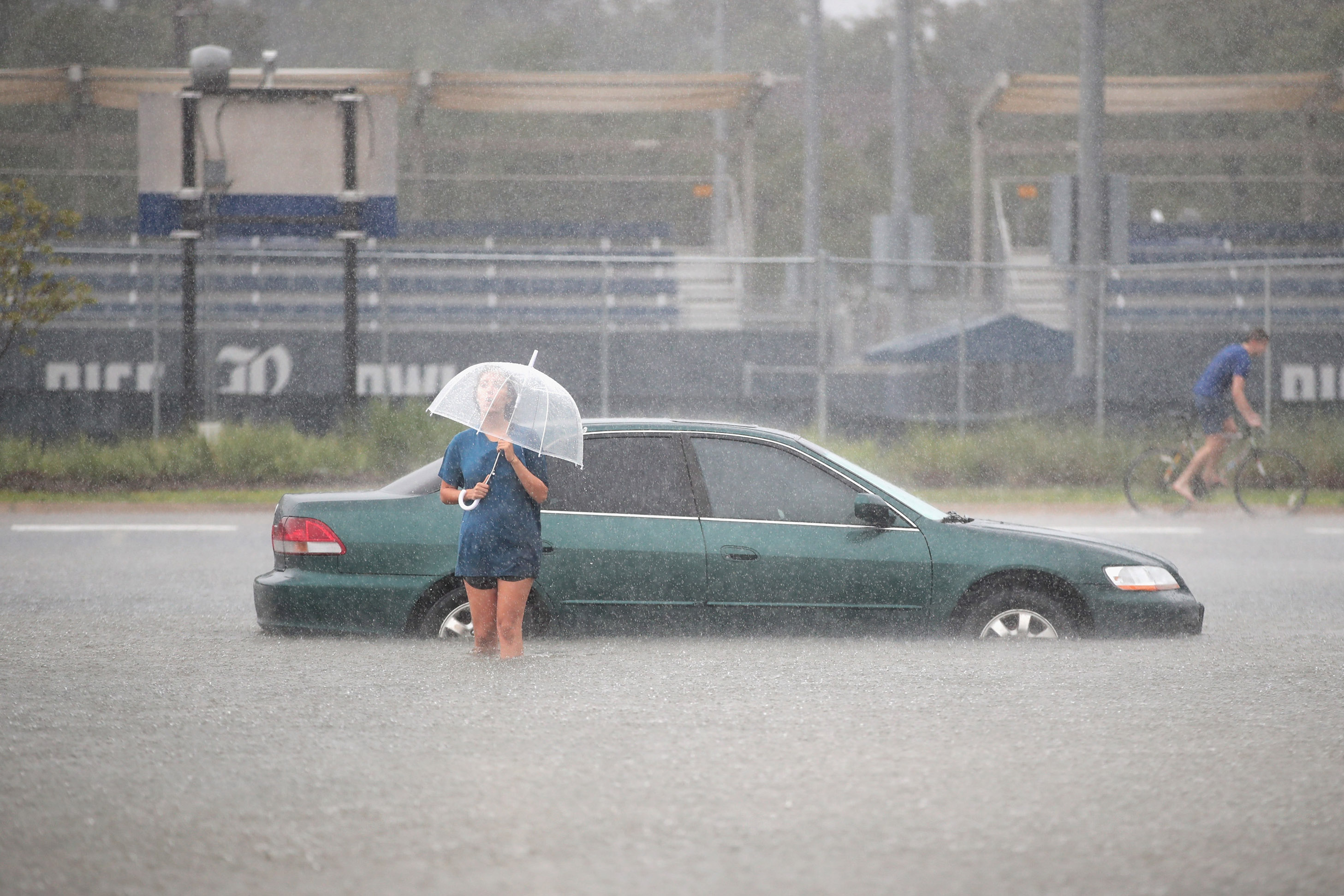Missing the Paris climate target by just a little means raising the odds of extreme weather by a lot

While the lofty goal of the landmark Paris climate agreement was to prevent global temperatures from rising 2 °C, it’s increasingly unlikely the world will pull that off (see “Global warming’s worst-case projections look increasingly likely”).
Several studies have found that even if every nation follows through on its pledges to cut greenhouse-gas emissions—already a big if—worldwide average temperatures would be likely to rise closer to 3 °C this century.
How much of a difference could that extra degree really make? A lot, it turns out. Heat waves, downpours, and dry spells worse than any in recorded history would become between three and five times more likely across huge parts of the globe, according to a study published in Science Advances on February 13.
As the extraordinary hurricane and wildfire seasons in the United States underscored last year, more and worse extreme-weather events exact huge tolls in lost lives, disaster recovery costs, and economic losses.
The study, led by Noah Diffenbaugh, a professor of Earth system science at Stanford University, analyzed historic weather records as well as the output of 15 climate models under multiple emissions scenarios (see “What the hell is a climate model—and why does it matter?”). Among the notable findings:
- With temperature increases of between 1 and 2 °C above preindustrial levels, the chance of blowing past old nighttime temperature records becomes three times more likely across about 38 percent of Europe. But between 2 and 3 °C, it becomes five times more likely across nearly half the continent. (Global average temperatures have already risen about 1 °C.)
- In North America, as temperatures increase across those same ranges, the odds of historically hot nights rise from three times more likely in more than 1 percent of the continent to three times more likely over 70 percent and five times more likely in nearly 11 percent.
- The chance of setting new benchmarks for the length of dry spells ticks up only marginally in most parts of the world as temperature rises approach 2 °C. But between 2 and 3 °C, it becomes three times more likely across 3 percent of North America, 11 percent of Europe, and 13 percent of southern South America.
- Finally, the probability of historic downpours also climbs in many parts of the world. Notably, in East Asia, the chance of record-breaking wettest days of the year increases from three times more likely in 8 percent of the region to three times more likely across 31 percent—and five times more likely across 10 percent.
Of course, most of these results also underscore that even the aspirational 2° threshold raises danger levels substantially. Indeed, some climate scientists have long stressed that it’s more an arbitrary political goal than a scientific safety boundary: the outspoken former NASA climate scientist James Hansen, for one, has called that goal “a recipe for global disaster.” A 2016 study he coauthored stressed that sea levels rose as much as 30 feet in the late Eemian period, starting around 125,000 years ago, when peak temperatures were just a few tenths of a degree warmer than currently.
Meanwhile, even preventing a 3° increase looks iffy, given the sluggish pace of clean-energy construction so far and the fact that President Donald Trump, the leader of the world’s second-biggest emitter, has vowed to exit the Paris accord (see “Exiting Paris, Trump cedes global leadership on climate change”).
And things really get dicey as temperature increases approach 4 °C. As an earlier World Bank-commissioned study noted, food stocks plummet, average summer temperatures reach extreme heatwave levels across vast swaths of the world, and sea-level rise threatens to displace hundreds of millions of people.
Deep Dive
Climate change and energy
The problem with plug-in hybrids? Their drivers.
Plug-in hybrids are often sold as a transition to EVs, but new data from Europe shows we’re still underestimating the emissions they produce.
Harvard has halted its long-planned atmospheric geoengineering experiment
The decision follows years of controversy and the departure of one of the program’s key researchers.
Why hydrogen is losing the race to power cleaner cars
Batteries are dominating zero-emissions vehicles, and the fuel has better uses elsewhere.
Decarbonizing production of energy is a quick win
Clean technologies, including carbon management platforms, enable the global energy industry to play a crucial role in the transition to net zero.
Stay connected
Get the latest updates from
MIT Technology Review
Discover special offers, top stories, upcoming events, and more.